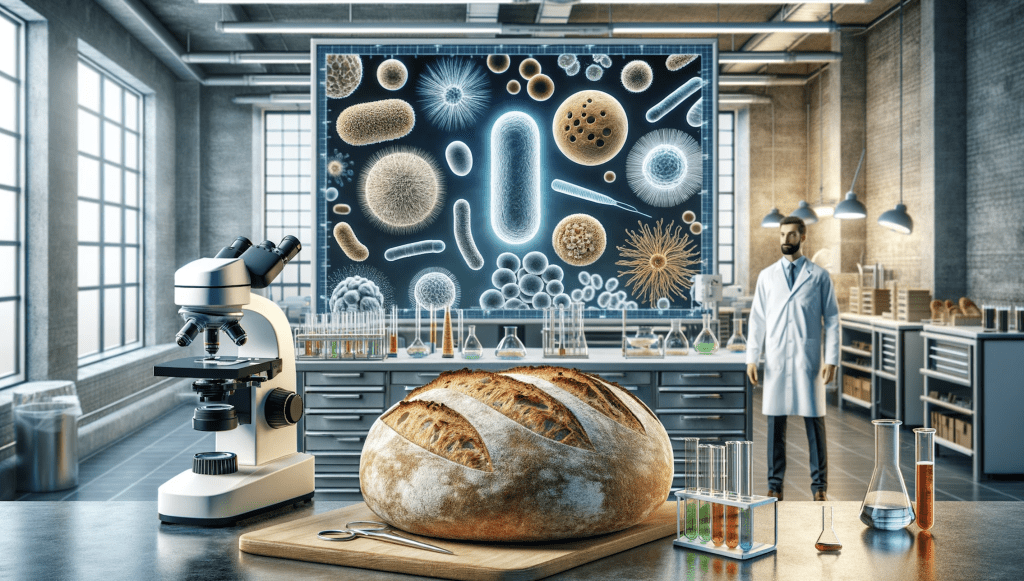Welcome to The Sourdough People, your dedicated online community and resource for all things sourdough. In this comprehensive blog post article overview, we delve deep into the scientific intricacies of sourdough, a bread cherished for its rich history and unique flavor. This post will explore the fascinating world of microorganisms that power the fermentation process, focusing particularly on the diverse species of yeast and bacteria that have been cultivated over generations.
The Ancient Art of Sourdough Breadmaking
Sourdough stands as the pinnacle of traditional breadmaking, tracing back over millennia. The secret to its enduring popularity lies in its simplicity and the complex interactions within its microbial community. A sourdough starter consists merely of flour and water, yet this mixture becomes a dynamic habitat for an array of microorganisms. These microbes are responsible for fermenting the sugars present in flour, a process that not only causes the dough to rise naturally—without the use of chemical leaveners—but also imparts the tangy flavour and characteristic aroma associated with sourdough bread.
Enhanced Understanding Through Scanning Electron Microscopy
Scanning Electron Microscopy (SEM) offers an unprecedented close-up look at the tiny constituents of a sourdough starter. By magnifying features up to 10,000 times smaller than a human hair, SEM provides a detailed view of the textural and compositional nuances that influence the behaviour of yeast and bacteria within the starter. The preparation of sourdough samples for SEM analysis involves intricate techniques like critical point drying, which meticulously removes moisture without collapsing cellular structures, and coating with iridium, which ensures electrical conductivity necessary for the electron microscope.
Microbial Diversity Within a Sourdough Starter
The microbial diversity in a sourdough starter is vast, with more than 20 different species of yeast and 50 species of bacteria commonly found. Among the yeasts, Saccharomyces cerevisiae is perhaps the most well-known, celebrated for its robust fermentation capabilities. Other yeast species such as Candida humilis, and Kluyveromyces marxianus also play crucial roles. The bacteria are equally diverse, with lactic acid bacteria such as Lactobacillus sanfranciscensis and Lactobacillus plantarum leading the fermentation process. These bacteria are pivotal in metabolizing sugars into lactic and acetic acids, which not only help preserve the bread but also enhance its sour flavour.
Yeast Types in Sourdough Starters
- Saccharomyces cerevisiae
- Candida milleri (or Kazachstania humilis)
- Candida humilis
- Kluyveromyces marxianus
- Torulaspora delbrueckii
- Pichia kudriavzevii
- Saccharomycodes ludwigii
- Wickerhamomyces anomalus
- Debaryomyces hansenii
- Lachancea thermotolerans
- Issatchenkia orientalis (formerly Candida krusei)
- Hanseniaspora uvarum
- Kluyveromyces lactis
- Zygosaccharomyces bailii
- Metschnikowia pulcherrima
- Cryptococcus humicola
- Brettanomyces bruxellensis
- Rhodotorula mucilaginosa
- Candida glabrata
- Schizosaccharomyces pombe
Bacteria Types in Sourdough Starters
- Lactobacillus sanfranciscensis
- Lactobacillus plantarum
- Lactobacillus brevis
- Lactobacillus fermentum
- Lactobacillus paralimentarius
- Lactobacillus pontis
- Lactobacillus reuteri
- Lactobacillus casei
- Lactobacillus rhamnosus
- Lactobacillus acidophilus
- Lactobacillus curvatus
- Lactobacillus buchneri
- Lactobacillus hilgardii
- Lactobacillus frumenti
- Leuconostoc citreum
- Leuconostoc mesenteroides
- Streptococcus thermophilus
- Pediococcus pentosaceus
- Pediococcus acidilactici
- Enterococcus faecium
- Enterococcus durans
- Weissella cibaria
- Weissella confusa
- Acetobacter pasteurianus
- Acetobacter aceti
- Lactobacillus delbrueckii
- Lactobacillus kefiranofaciens
- Lactobacillus sakei
- Lactobacillus alimentarius
- Lactobacillus brevis subsp. Lindneri
- Lactobacillus farciminis
- Lactobacillus kefiri
- Lactobacillus mucosae
- Lactobacillus rossiae
- Lactobacillus crustorum
- Lactobacillus mindensis
- Lactobacillus namurensis
- Lactobacillus panis
- Lactobacillus paracasei
- Lactobacillus parakefiri
- Lactobacillus pentosus
- Lactobacillus salivarius
- Lactococcus lactis
- Oenococcus oeni
- Weissella hellenica
- Weissella minor
- Weissella paramesenteroides
- Weissella viridescens
- Bifidobacterium animalis
- Bifidobacterium longum
The Symbiotic Dance of Yeasts and Bacteria
The interaction between yeasts and bacteria in a sourdough starter is a beautiful example of symbiosis. Yeasts, primarily responsible for producing carbon dioxide and alcohol, help the dough rise and develop its structure. Meanwhile, bacteria generate organic acids, contributing to the bread’s flavour profile and longevity. This microbial synergy is what makes each sourdough starter unique and is the reason behind the varying flavours and textures of sourdough bread from different cultures and regions.
The Scientific Endeavour to Understand Sourdough
The study of sourdough at the microbial level is not just academic; it has practical implications for improving bread quality and flavour consistency. Advanced techniques like gene sequencing are employed to further unravel the complex web of microbial interactions. By understanding the genetic makeup and functionality of these microorganisms, bakers can better manipulate fermentation conditions to achieve desired characteristics in sourdough bread.
Embracing the Legacy and Science of Sourdough
Here at The Sourdough People, we celebrate the intricate dance of nature’s tiny forces that come together to create sourdough bread. The scientific journey into the heart of sourdough not only deepens our appreciation for this ancient art but also enhances our ability to share its unique delights. As we continue to explore the microbial legacies embedded within each starter, we invite you to join us in both baking and understanding sourdough, ensuring this traditional craft flourishes for generations to come.
Thank you for diving deep into the scientific world of sourdough with us. Each loaf you bake is a living link to an age-old tradition, enhanced and informed by modern science, bringing the past and future together in every bite. Let’s continue to nurture and celebrate the vibrant community of microorganisms that make our favourite sourdough so special.
sources and citations
The Conversation
Phys.org
Research Gate
Salon.com





















